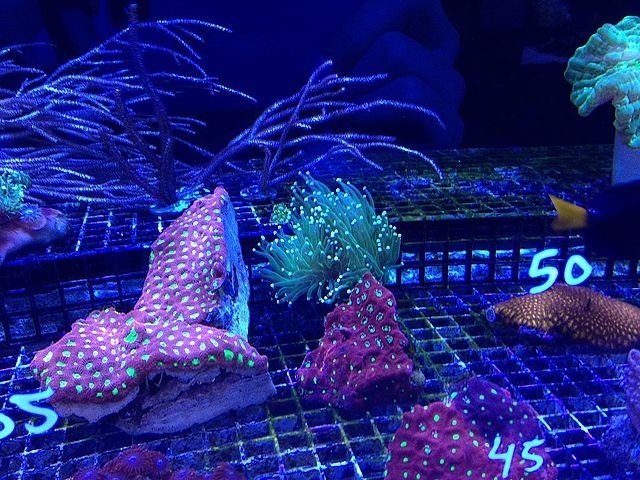The coral reefs north of Negros Island are once more teeming with seahorses after a seven-year partnership between researchers and the local island community successfully protected and replenished their wild population.
At Molocaboc Island in Sagay City, Negros Occidental, divers assisted in scientific surveys of seahorse populations, technicians maintained seahorse breeding facilities, the local government’s Bantay Dagat (sea patrol) enforced protection, and schools gladly embraced information and educations campaigns.
The island is within the Sagay Marine Reserve, a marine protected area chosen as the project site of the Southeast Asian Fisheries Development Center Aquaculture Department (SEAFDEC/AQD) to protect and revive the dwindling population of the tiger tail seahorse (Hippocampus comes).
During assessments done from 2012 to 2013, local divers only found an average of 4.6 seahorses after a standardized hour-long survey. Dr. Shelah Mae Ursua, an associate scientist of SEAFDEC/AQD, also collected DNA samples for genetic analyses and found low levels of genetic variations among the seahorses that confirmed a dwindling population.
Over seven years of conservation efforts, the number of seahorses collected during surveys gradually increased to 18.7 individuals per dive in 2015, 30 between 2016 and 2018, and 34 in 2019.
“This suggests that the natural seahorse population can recover with the proper management of natural resources, particularly by minimizing human disturbances in their habitats and preventing the collection of seahorses,” said Dr. Ursua who led the project which was funded by the Government of Japan Trust Fund (GOJ-TF).
Remarkably, Dr. Urusa said, the local divers also reported that other fish were visibly becoming more abundant in the reefs.
Stay Always Informed
Join our communities to instantly receive the most important news, reports, and analysis from the aquaculture industry.
According to the International Union for Conservation of Nature (IUCN), the Philippines is home to 10 species of seahorses, but seven are designated the global conservation status of “vulnerable” due to threats from overharvesting, pollution, and destruction of their coral reef habitat.
Seahorses are collected mostly because they are an ingredient in Chinese traditional medicine and also as part of the curio trade. Under Section 97 of Republic Act 8550, their exploitation and trade have been illegal in the Philippines since 2004.
Community involvement
To monitor the wild population of seahorses, local divers were trained by SEAFDEC/AQD on how to properly handle the delicate creatures. They also participated in informal lectures about seahorse biology and received training on determining their size, weight, and sexual maturity.
A solar-powered hatchery, built to produce juveniles, was also run and managed by locals. “Pregnant” male seahorses were collected from a coral reef area and transferred to 10-liter pails, where they give birth, before being released back to the wild.
Juveniles were then raised on a diet of natural food available in the area and stocked in submerged nursery pens to grow for another three to six months. When the seahorses reached at least 5 centimeters in stretched height, measured from their crown to the tip of the tail, they too were released to repopulate the reef.
Dr. Ursua and her team also conducted annual lectures and information drives where students, school teachers, fishermen organization members, and local government officials were oriented on seahorse biology and conservation.
In a “Draw and Tell” contest in 2017, 20 students from Molocaboc Integrated School created artworks that featured the importance of protecting the seahorse’s natural habitat to safeguard their dwindling wild population.
Why Molocaboc?
“Molocaboc is within an identified Marine Protected Area (MPA) of Sagay City and thus it was an important aspect for the site selection. There was also a reported natural population of seahorses around the area,” explained Dr. Ursua. As an MPA, Molocaboc Island and its flora and fauna are protected by law.
“The island also had an established and cooperative fisherfolk organization that partnered with us in the coordination and implementation of the project,” added Dr. Ursua. “These people are the primary custodians of their natural resources. The more they will understand the biology and ecology of seahorses, the more they will appreciate the need for their management and preservation.”
The project, along with the hatchery and nursery facilities, has been formally turned over by SEAFDEC/AQD to the Sagay City government in Dec. 17, 2019.
Source: SEAFDEC Aquaculture Department
Editor at the digital magazine AquaHoy. He holds a degree in Aquaculture Biology from the National University of Santa (UNS) and a Master’s degree in Science and Innovation Management from the Polytechnic University of Valencia, with postgraduate diplomas in Business Innovation and Innovation Management. He possesses extensive experience in the aquaculture and fisheries sector, having led the Fisheries Innovation Unit of the National Program for Innovation in Fisheries and Aquaculture (PNIPA). He has served as a senior consultant in technology watch, an innovation project formulator and advisor, and a lecturer at UNS. He is a member of the Peruvian College of Biologists and was recognized by the World Aquaculture Society (WAS) in 2016 for his contribution to aquaculture.




